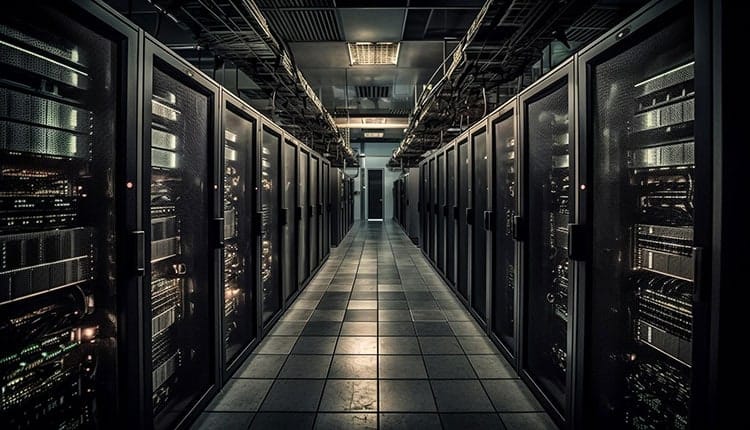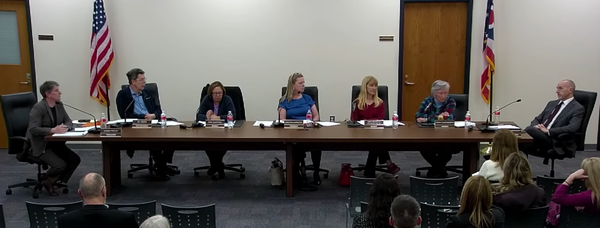Ohio Data Centers Are Becoming A Growing Pain

BY NICK ROGERS
STATEWIDE - Data center development is booming in Ohio, a region some are now calling the “Silicon Heartland.” The enormous growth is coming with equally enormous tax breaks for wealthy companies such as Amazon, Google, Meta, and Microsoft. Proponents of the expansion point to long-term job-creation, economic growth, and “reliable connectivity” as reasons to praise the projects. Detractors see very little actual job creation and a potentially negative impact on the environment and strain on the existing electrical grid.
In 2011, Ohio created a tax abatement program for large tech centers. The program was updated in 2013 with a clause that allowed for multiple-customer aggregation at a single site. The program offers up to 100% sales tax abatement (construction materials, computer equipment, mechanical and electrical equipment, cooling systems, and power infrastructure) for qualifying companies who meet the $100 million 3+ year investment and $1.5 million payroll requirements. Property tax abatements are also being offered in “exceptional cases.”
Some estimate that $123 million in sales tax exemptions will be claimed by tech giants in Ohio this year and up to $127 million next year. Some companies are receiving up to 75% reduction in state commercial activity taxes over the next 15 years for job creation, even though many of these data center sites (some as big as stadiums) house as few as 10 employees. One Columbus estimates that $20 billion is being invested in over 40 data center campuses.
Zach Schiller, an economist for the think tank Policy Matters Ohio, said, "If you're looking at cost-benefit here, we're spending hundreds of millions of dollars for puny numbers of jobs from companies who are no two-bit operations."
Kasia Tarczynska, a research analyst with Good Jobs First, said, "They create a very limited number of jobs, because they're very capital intensive.”
The above estimates are difficult to come by, as the Ohio Department of Development (ODD) and the Ohio Department of Taxation (ODT) are offering very little-to-no information about who is receiving these benefits and how much they are receiving. The ODD has refused to disclose the number of local property tax abatements it has allowed. The ODT has similarly refused to disclose what companies are receiving sales tax exemptions or – and this may be far more pertinent of an issue – how much lost revenue the state is currently enduring due to these exemptions.
Andrea Lannom, a spokesperson for the ODT, said, "Due to confidentiality, we cannot provide actual tax forgone related to this credit — even in the aggregate because it is such a finite number of taxpayers.”
Then, there are the concerns about the centers’ strain on the electrical grid. PJM released a 2023 report warning of “increasing reliability risks” due to aging and/or retiring coal plants.
And, speaking of “aging,” the Perry, Ohio nuclear plant – which was scheduled for retirement in 2021 before House Bill 6 and its huge cash subsidy (and the ensuing revelation of the largest bribery scandal in our state’s history) kept its doors open. It was just revealed, parenthetically, that the Perry plant was responsible for leaking radioactive compounds into the nearby water table. Perry was to be the newest location of a Microsoft data center campus but, due to largely undisclosed reasons, the company backed out of its plan. Residential views on the proposed development were mixed.
At a town meeting earlier this year, some Perry residents voiced concern over the potential of their relatively peaceful and rural town turning into a noisy, aesthetically displeasing industrial area.
Perry resident, Steve Hunt, said, “We do have a beautiful rural life that was described by so many, and we chose to live here vs. the more-developed Lima. There are industrial parks. There are other areas. There are areas that you could consider that would be better used for something like that and not ruin the rural living aspect.”
More on possible grid-strain issues: Goldman Sachs has projected a 2.4% national increase in power demand; 40% of that is linked to data centers. They also predict that, by 2030, 8% of the country’s power demand will come from data centers; up from 3% in 2022.
American Electric Power (AEP), the utility which serves most of the date centers, has reached an agreement with its stakeholders stating that new data centers larger than 25 MW would have to pay for at least 85% of the energy they expect to need each month, even if they use less, to cover the cost of infrastructure needed to bring electricity to the data centers. The agreement is pending per Public Utility Commission of Ohio (PUCO) approval.
Maureen Willis, director of the Ohio Consumers Council (OCC) – one of a few organization involved on the side of AEP, said, “Now it’s up to the five PUCO commissioners to do their part by adopting this broadly-supported, pro-consumer agreement.” With PUCO’s history of corruption, it’s not unheard-of to envision a blocking of the agreement in favor of Big Tech.
And while a consumer-friendly ruling in this instance may contribute to the protection of Ohioans from higher monthly bills for a little while (hotly-debated HB 79 and its uncertain future notwithstanding), it likely will not solve the grid strain issues (these behemoth corporations, while not happy with the agreement, have the funds to spare and likely will not be deterred the 85% future energy use commitment).
And then there are the environmental considerations.
As Ohio’s drought continues to be a raise eyebrows, the massive amounts of water used to cool these giant data centers is consequently raising red flags. These centers can consume up to 5 million gallons of water per day. As graphics processing and AI continue to proliferate, the need for this water (often-times drinking water), will grow exponentially.
Ohio data centers proliferation appears to be a simple case of supply and demand. The more cloud computing/AI technology employed in our daily lives, the more these centers will be needed to keep the data flowing. The beast is being fed, and the beast is growing. Do you consent?




